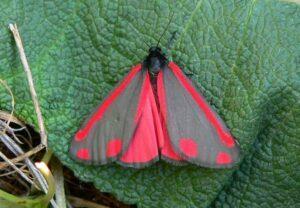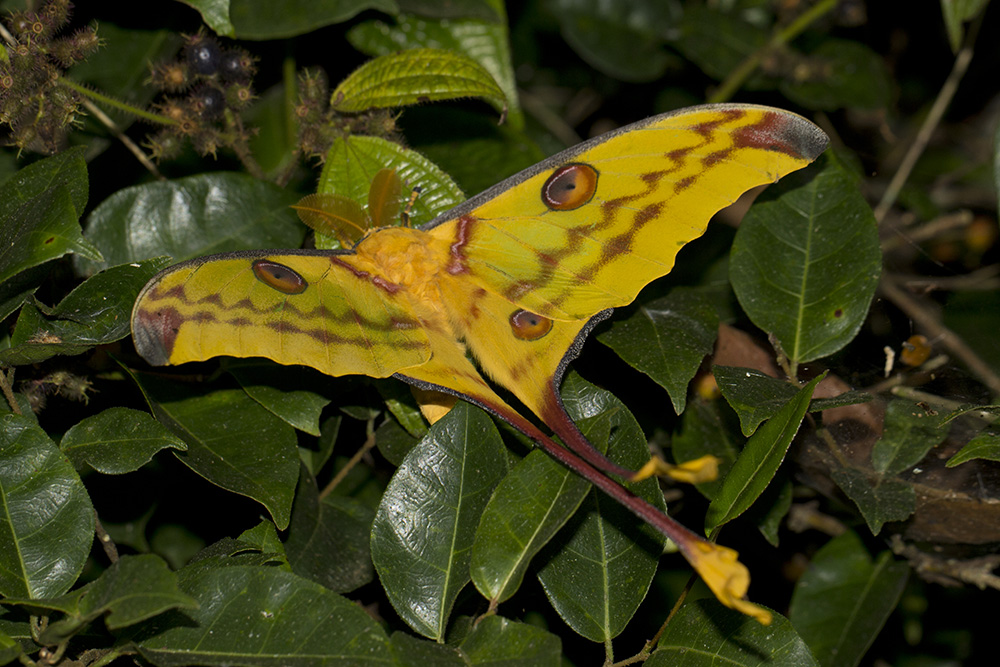Cinnabar Moth (Tyria jacobaeae)
Updated on
17/11/2022The medium-sized, day-flying cinnabar moth plays a key role in successfully controlling ragwort, a toxic weed poisonous to livestock. May to August is when you can see it. The moth is named after cinnabar, the red mineral, owing to the red patches on its black wings.
Scientific Classification
- Class:Insecta
- Order:Lepidoptera
- Superfamily:Noctuoidea
- Family:Erebidae
- Subfamily:Arctiinae
- Genus:Tyria
- Species:T. jacobaeae
Conservation Status
Description
The cinnabar moth is around 0.79 in (20 mm) long with pinkish-red and black wings. They usually don’t exhibit much variation in patterning, but rarely, the red markings on their wings may be replaced with yellow or the wings could be entirely black, or only the forewing completely red with a black border. The bright colors of the adults and the larvae warn their predators of their toxicity.
Distribution: The moth is endemic to Europe, western and central Asia. Its range further spreads east across the Palearctic region to China and Siberia. It has been introduced in Australia, New Zealand, and North America as a control measure against ragwort, the food of its larva.
Habitat: Open grassy places like railway banks, waste ground, woodland rides, and gardens. But it is predominantly encountered in well-drained rabbit-grazed grasslands, heathlands, and mature sand dunes.
Do They Bite/Sting: No.
Lifespan: Just under a year.
Predators: Some species of cuckoo that eat hairy and poisonous caterpillars, crab spiders.
Behavior and Characteristics
Diet
The adults feed on nectar while the caterpillars eat ragwort and groundsel.
Life Cycle
1. Egg Stage
A female lays around 300 eggs in batches of 30 to 60 on the lower surfaces of ragwort leaves.
2. Larva Stage
The newly hatched larvae or caterpillars feed from the undersides of the ragwort leaves around the area where the eggs were laid. They absorb poisonous, bitter alkaloids from the plants, assimilating them to make themselves unpalatable. As they get bigger and molt, they eat the flowers and leaves of the said plant. They can be spotted in the open during the day.
They can turn cannibalistic mainly if they face a lack of food sources. The larvae are pale yellow at the beginning and develop orange or yellow and jet-black stripes at later instars. The voracious eaters can reach a size of 1.2 in (30 mm). Low predation rates make vast populations of the caterpillar wipe out entire patches of ragwort.
3. Pupa Stage
Very few larvae can reach the pupal stage. It is a result of complete consumption of their food sources before reaching maturity and random cannibalistic behavior. They are also preyed upon by a species of ant, Formica polyctena. The pupae spend the winter in cocoons under the ground. Moles can eat them in this stage.
4. Adult Stage
The adults emerge in summer. Their wingspan is 1.3-1.7 in (32-42 mm).
Comparison with Similar Species
Burnet Moths
The wings of the cinnabar moth are more triangular, while that of the burnet moth are more ovular and glossy.
FAQs
Cinnabar moths are not dangerous to humans. But as they absorb the toxicity of ragwort, they can cause a rash if handled.
Cinnabar moth caterpillars are poisonous to many animals due to their toxicity. It can cause allergic reactions in cats and dogs.
Humans usually have mild to moderate reactions to the caterpillars. But they can cause asthma, potentially lethal kidney failures, hemorrhage, and extreme joint inflammations leading to permanent effects on the body of some people.
Source
glenlivet-wildlife.co.uk, ukrbin.com, ukmoths.org.uk, first-nature.com, trifectanatural.com, upload.wikimedia.org, projectnoah.org















